E-Series — AMD — PDF Catalogs | Technical Documentation
Add to favorites
{{requestButtons}}
Catalog excerpts
Family 16h Models 00h-0Fh AMD E-Series Mobile Processor Product Data Sheet Publication # 53509 Issue Date Advanced Micro Devices
© 2013-2014 Advanced Micro Devices Inc. All rights reserved. The information contained herein is for informational purposes only, and is subject to change without notice. While every precaution has been taken in the preparation of this document, it may contain technical inaccuracies, omissions and typographical errors, and AMD is under no obligation to update or otherwise correct this information. Advanced Micro Devices, Inc. makes no representations or warranties with respect to the accuracy or completeness of the contents of this document, and assumes no liability of any kind, including…
Family 16h Models 00h-0Fh AMD E-Series Mobile Processor Product Data Sheet Revision History Third Public Release Second Public Release First Public Release Revision History
Family 16h Models 00h-0Fh AMD E-Series Mobile Processor Product Data Sheet 1 Family 16h Models 00h-0Fh AMD E-Series Mobile Processor Features 1. 1 Family 16h Models 00h-0Fh AMD E-Series Mobile Processor Features This section lists the features and design capabilities of the Family 16h Models 00h-0Fh AMD E-Series Mobile accelerated processor. • Compatible with Existing 32-Bit x86 and 64-bit AMD64 Code Base • Including support for SSE, SSE2, SSE3, SSE4a, SSE4.1, SSE4.2, SSSE3, ABM, AVX, AES, BMI, XSAVE/XRSTOR, XGETBV/XSETBV, PCLMULQDQ, MOVBE, POPCNT, F16C, MMX™, and legacy x86 instructions •…
Family 16h Models 00h-0Fh AMD E-Series Mobile Processor Product Data Sheet • Power Management • Multiple low-power states • AMD AllDay™ power technology • System Management Mode (SMM) • ACPI-compliant, including support for processor performance states (P-states) • Supports processor power states C0, C1, CC6, and PC6 • Supports sleep states including S0, S3, S4, and S5 • Supports adaptive S4 • PCIe® power gating • PCIe speed power policy • AMD Turbo CORE technology 3.02 with per core power gating 2 Turbo CORE 3.0 technology is available on selected models.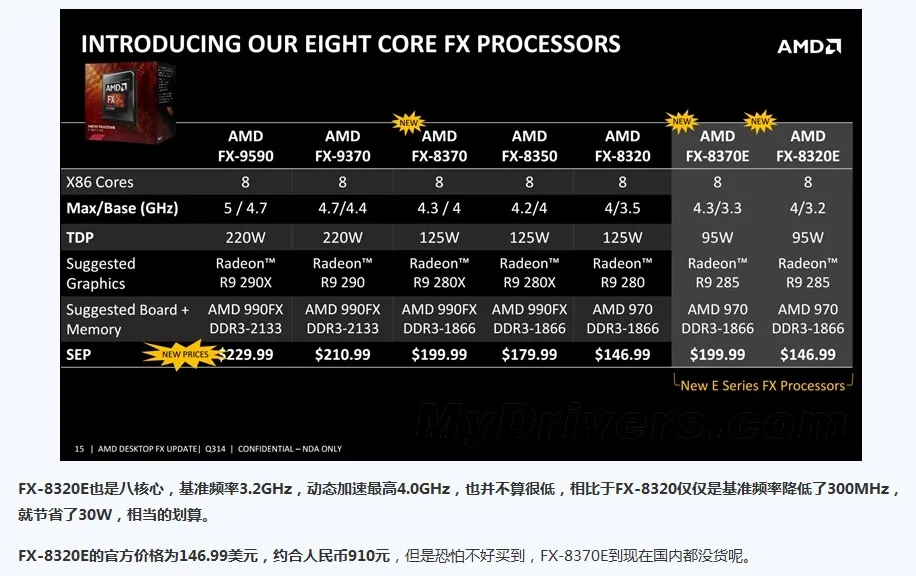 • Electrical Interfaces • DDR3…
• Electrical Interfaces • DDR3…
Family 16h Models 00h-0Fh AMD E-Series Mobile Processor Product Data Sheet • Integrated Controller Hub • Supports • • • • • • • • • Universal Serial Bus (USB) versions 1.1, 2.0, and 3.0 Serial ATA revision 3.0 Secure Digital (SD) System Management Bus (SMBus) Low Pin Count (LPC) bus High Definition (HD) audio Serial IRQ Serial Peripheral Interface (SPI) Advanced Configuration and Power Interface (ACPI) Real-Time Clock (RTC) Programmable Interrupt Controller (PIC) System Management Interrupt (SMI) General-Purpose I/O (GPIO) Power Management Watchdog Timer (WDT) Integrated Clock Generator •…
Family 16h Models 00h-0Fh AMD E-Series Mobile Processor Product Data Sheet 1.2 Family 16h Models 00h — 0Fh AMD E-Series Graphics Features This section lists the graphics features available for the Family 16h Models 00h — 0Fh AMD E-Series mobile accelerated processor when the internal GPU is enabled. • Graphics • Discrete-level graphics processor embedded alongside the x86 CPU complex • Dedicated graphics memory controller • Refer to AMD Family 16h Models 00h — 0Fh Processor Power and Thermal Data Sheet, order# 51522, for graphics engine clock speeds. • Power Management • GPU power gating •…
• Power Management • GPU power gating •…
Family 16h Models 00h-0Fh AMD E-Series Mobile Processor Product Data Sheet Advanced shader design, with ultra-threading sequencer for high efficiency operations Advanced, high performance branching support, including static and dynamic branching High dynamic range rendering with floating point blending, texture filtering, and anti-aliasing support 16-bit and 32-bit floating point components for high dynamic range computations Full anti-aliasing on render surfaces up to and including 128-bit floating point formats Support for OpenCL™ 1.2, DirectCompute 11 and Microsoft C++ AMP Support for…
Family 16h Models 00h-0Fh AMD E-Series Mobile Processor Product Data Sheet • Motion video decode acceleration technology: • Dedicated hardware (UVD) for H.264, MPEG4, VC-1, MVC, and MPEG2 decode: • H.264 implementation based on the ISO/IEC 14496-10 specification • MPEG6 implementation based on the ISO/IEC 14496-2 specification 6 Sprite, global motion compensation, and reversible variable length coding are not supported.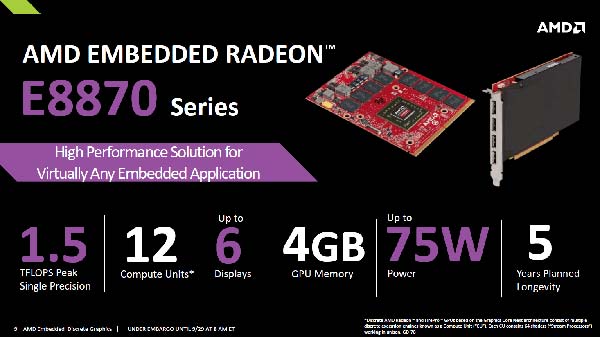 • VC-1 implementation based on the SMPTE 421M specification • MPEG2 implementation based on the ISO 13818-2 specification • Multi View Coding (MVC) for Blu-ray 3D content •…
• VC-1 implementation based on the SMPTE 421M specification • MPEG2 implementation based on the ISO 13818-2 specification • Multi View Coding (MVC) for Blu-ray 3D content •…
Family 16h Models 00h-0Fh AMD E-Series Mobile Processor Product Data Sheet • Miracast Wireless Display Features • One wireless display low latency wireless display output at up to 1920 x 108012 12 1080 is available on selected models • Total display head limit remains two total with up to one being Miracast • Supports HDCP 2 protection for the wireless display output • Miracast compliant under Windows 8 when paired with specific Wi-Fi WLAN subsystems13 13 Contact AMD for current list of compatible Wi-Fi subsystems • DisplayPort Features • Supports all mandatory features of the VESA…
Family 16h Models 00h-0Fh AMD E-Series Mobile Processor Product Data Sheet Table 1. HDMI™ Features HDMI™ Feature Link Capabilities Maximum Signal Bandwidth (MHz) Maximum HDMI Data Bandwidth (Gbit/s) HDMI 1.3 Deep Color Maximum 4:4:4 Color Depth (bits per component) Maximum 4:2:2 Color Depth (bits per component) PCM (Pulse-Code Modulation) Audio Capabilities PCM Audio Rates Supported PCM Audio Bits per Sample PCM Audio Maximum Channels PCM Audio Maximum Bandwidth (Rate × Bits × Channels) Compressed-Audio Capabilities Compressed-Audio Maximum Bandwidth Specific non-PCM Audio-Format Support.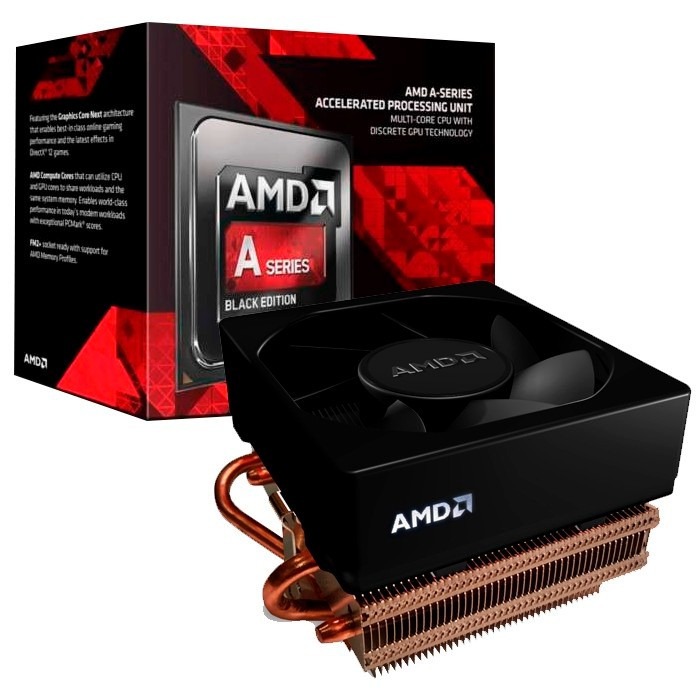 ..
..
Family 16h Models 00h-0Fh AMD E-Series Mobile Processor Product Data Sheet Table 2 shows the maximum resolution for each output configuration. Table 2. Display Interface Support Output Configuration Single link LVDS (DP0 only) Internal LCD panel. Audio support is available for DisplayPort. Some models do not support the highest resolutions. Video playback is not guaranteed in this mode. For display interface mapping, see the «Display Interface Design Guidelines» chapter in the FT3 Processor Motherboard Design Guide, order# 51387. Family 16h Models 00h-0Fh AMD E-Series Mobile Processor…
All AMD catalogs and technical brochures
-
Radeon™ Pro WX 4100
2 Pages
-
Radeon-Pro-WX5100
2 Pages
-
radeon-pro-ssg
3 Pages
-
Radeon™ Pro WX 7100
2 Pages
-
FirePro-W5100
2 Pages
-
G-SERIES SOC PLATFORM
5 Pages
-
R series
5 Pages
-
2nd Gen R series
2 Pages
-
FirePro-W7100
2 Pages
-
W4300
2 Pages
-
V3900
2 Pages
-
W2100
2 Pages
-
W4100
2 Pages
-
W7100
2 Pages
-
W600
2 Pages
-
W9100
2 Pages
-
W8100
2 Pages
-
V7900
2 Pages
-
V5800
2 Pages
-
W5000
2 Pages
-
AMD Embedded Radeon? E4690 PCI Express®
2 Pages
-
AMD Embedded Radeon? E4690 MXM module
2 Pages
-
AMD Radeon? HD 6970M MXM V3.
 0 module
0 module2 Pages
-
AMD Radeon? Sky Series solution overview
2 Pages
-
Sempron
12 Pages
-
Opteron_Product
12 Pages
-
G-Series
12 Pages
-
53738_PDS_Athlon
12 Pages
-
ATI Radeon E4690 PCI Express Board
2 Pages
-
ATI Radeon E2400 MXM-II Module
2 Pages
-
ATI Radeon E2400 PCI Express Board
2 Pages
-
AMD EMBEDDED G-SERIES PLATFORM
4 Pages
-
AMD Sempron ASB1 Processors (BGA)
2 Pages
-
AMD Turion II Neo | AMD Athlon II Neo Processors (ASB2)
2 Pages
-
AMD Athlon | AMD Athlon X2 Dual-Core Processors
2 Pages
-
Socket AM3/AM2 Processors
2 Pages
-
High Performance Game Streaming
2 Pages
-
AMD FirePro S7000 Server Graphics
2 Pages
-
AMD FirePro S9000 Server Graphics
2 Pages
-
AMD FirePro S10000 Server Graphics
2 Pages
-
AMD FirePro W9000
2 Pages
-
AMD FirePro 2270
2 Pages
-
ATI FirePro 2460
2 Pages
-
ATI FirePro? V5800 DVI
2 Pages
-
AMD FirePro W8000
2 Pages
-
AMD FirePro W7000
2 Pages
-
AMD Display Technologies whitepaper
19 Pages
-
E2400
2 Pages
-
E4690 MXM V3.
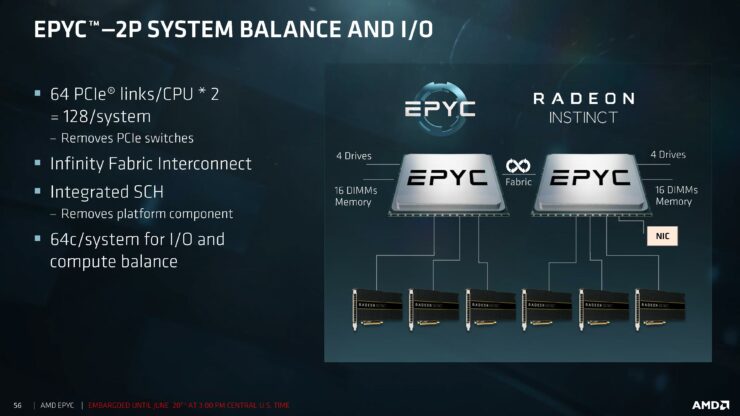 0 Module
0 Module2 Pages
-
E4690
2 Pages
-
E6460
2 Pages
-
E6760 PCI Express Board
2 Pages
-
E6760-MXM
2 Pages
-
E6760 Embedded GPU
2 Pages
-
M690T
2 Pages
-
46110A_High_Perf_PB
2 Pages
-
47589A_SR5690_chipset
2 Pages
-
_Athlon_II_785E_AM3
2 Pages
-
32284a_nxfamily
2 Pages
-
33358f_lx
2 Pages
-
45626B_Sempron_BGA
2 Pages
-
turion-athlon-neo-x2
2 Pages
-
48243_ASB2_Platform_Brief_web
2 Pages
-
43887C_Athlon_PB
2 Pages
Compare
Remove all
Compare up to 10 products
E-350 [in 8 benchmarks]
AMD
E-350
Buy
- Interface
- Core clock speed
- Max video memory
- Memory type
- Memory clock speed
- Maximum resolution
Summary
AMD started AMD E-350 sales 9 November 2010. This is a Zacate architecture notebook processor primarily aimed at home systems. It has 2 cores and 2 threads, and is based on 40 nm manufacturing technology, with a maximum frequency of 1600 MHz and a locked multiplier.
This is a Zacate architecture notebook processor primarily aimed at home systems. It has 2 cores and 2 threads, and is based on 40 nm manufacturing technology, with a maximum frequency of 1600 MHz and a locked multiplier.
Compatibility-wise, this is FT1 BGA 413-Ball processor with a TDP of 18 Watt. It supports
DDR3
Single-channel memory.
We have no data on E-350 benchmark results.
General info
E-350 processor market type (desktop or notebook), architecture, sales start time and pricing.
| Place in performance rating | not rated | |
| Market segment | Laptop | |
| Series | AMD E-Series | |
| Architecture codename | Zacate (2011−2013) | |
| Release date | 9 November 2010 (12 years old) |
|
| Current price | $268 | of 25332 (Xeon Platinum 8276L) |
Technical specs
Basic microprocessor parameters such as number of cores, number of threads, base frequency and turbo boost clock, lithography, cache size and multiplier lock state.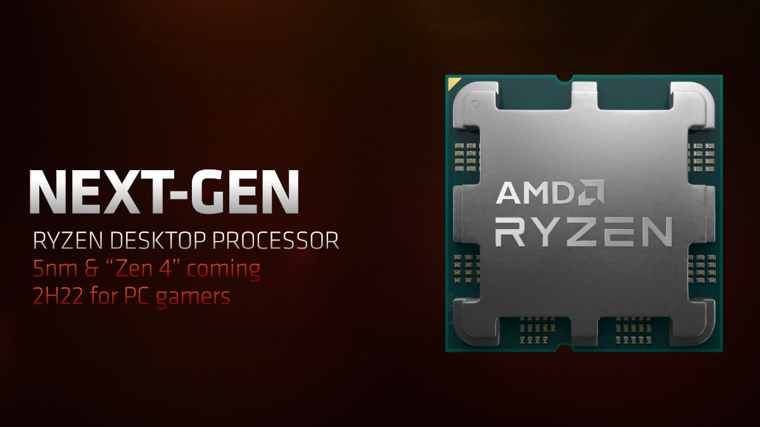 These parameters can generally indicate CPU performance, but to be more precise you have to review its test results.
These parameters can generally indicate CPU performance, but to be more precise you have to review its test results.
| Physical cores | 2 (Dual-core) | |
| Threads | 2 | |
| Boost clock speed | 1.6 GHz | of 6 (Core i9-13900KS) |
| L1 cache | 64K (per core) | of 1536 (EPYC Embedded 3401) |
| L2 cache | 512K (per core) | of 12288 (Core 2 Quad Q9550) |
| L3 cache | 0 KB | of 32768 (Ryzen Threadripper 1998) |
| Chip lithography | 40 nm | of 4 (Ryzen 9 7940HS) |
| Die size | 75 mm2 | |
| 64 bit support | + | |
| Windows 11 compatibility | — |
Compatibility
Information on E-350 compatibility with other computer components and devices: motherboard (look for socket type), power supply unit (look for power consumption) etc. Useful when planning a future computer configuration or upgrading an existing one.
Useful when planning a future computer configuration or upgrading an existing one.
Note that power consumption of some processors can well exceed their nominal TDP, even without overclocking. Some can even double their declared thermals given that the motherboard allows to tune the CPU power parameters.
| Number of CPUs in a configuration | 1 | of 8 (Opteron 842) |
| Socket | FT1 BGA 413-Ball | |
| Thermal design power (TDP) | 18 Watt | of 400 (Xeon Platinum 9282) |
Technologies and extensions
Technological capabilities and additional instructions supported by E-350. You’ll probably need this information if you require some particular technology.
| Instruction set extensions | MMX(+), SSE(1,2,3,3S,4A), AMD-V |
Virtualization technologies
Supported virtual machine optimization technologies. Some are specific to Intel only, some to AMD.
Some are specific to Intel only, some to AMD.
| AMD-V | + |
Memory specs
Types, maximum amount and channel number of RAM supported by E-350’s memory controller. Depending on the motherboard, higher memory frequency may be supported.
| Supported memory types | DDR3 Single-channel |
of 5600 (Ryzen 9 7940HS) |
Graphics specifications
General parameters of GPU integrated into E-350.
| Integrated graphics card | AMD Radeon HD 6310 |
Benchmark performance
Single-core and multi-core benchmark results of E-350. Overall benchmark performance is measured in points in 0-100 range, higher is better.
- Passmark
- GeekBench 5 Single-Core
- GeekBench 5 Multi-Core
- Cinebench 10 32-bit single-core
- Cinebench 10 32-bit multi-core
- 3DMark06 CPU
- Cinebench 11.
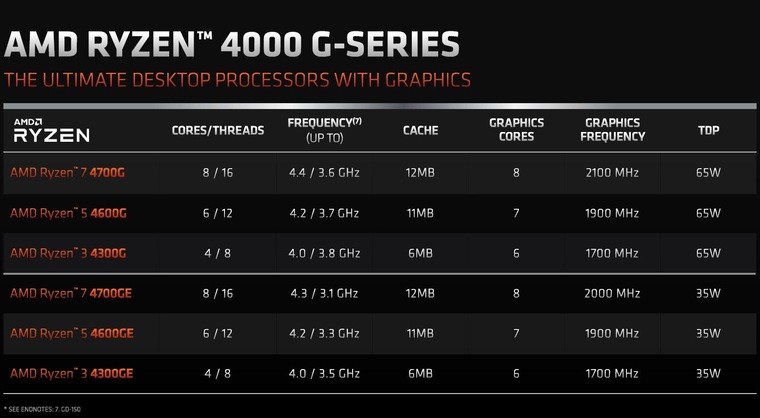 5 64-bit multi-core
5 64-bit multi-core
Passmark
Passmark CPU Mark is a widespread benchmark, consisting of 8 different types of workload, including integer and floating point math, extended instructions, compression, encryption and physics calculation. There is also one separate single-threaded scenario measuring single-core performance.
Benchmark coverage: 67%
E-350
418
GeekBench 5 Single-Core
GeekBench 5 Single-Core is a cross-platform application developed in the form of CPU tests that independently recreate certain real-world tasks with which to accurately measure performance. This version uses only a single CPU core.
Benchmark coverage: 37%
E-350
130
GeekBench 5 Multi-Core
GeekBench 5 Multi-Core is a cross-platform application developed in the form of CPU tests that independently recreate certain real-world tasks with which to accurately measure performance. This version uses all available CPU cores.
This version uses all available CPU cores.
Benchmark coverage: 37%
E-350
235
Cinebench 10 32-bit single-core
Cinebench R10 is an ancient ray tracing benchmark for processors by Maxon, authors of Cinema 4D. Its single core version uses just one CPU thread to render a futuristic looking motorcycle.
Benchmark coverage: 20%
E-350
1049
Cinebench 10 32-bit multi-core
Cinebench Release 10 Multi Core is a variant of Cinebench R10 using all the processor threads. Possible number of threads is limited by 16 in this version.
Benchmark coverage: 19%
E-350
2005
3DMark06 CPU
3DMark06 is a discontinued DirectX 9 benchmark suite from Futuremark. Its CPU part contains two scenarios, one dedicated to artificial intelligence pathfinding, another to game physics using PhysX package.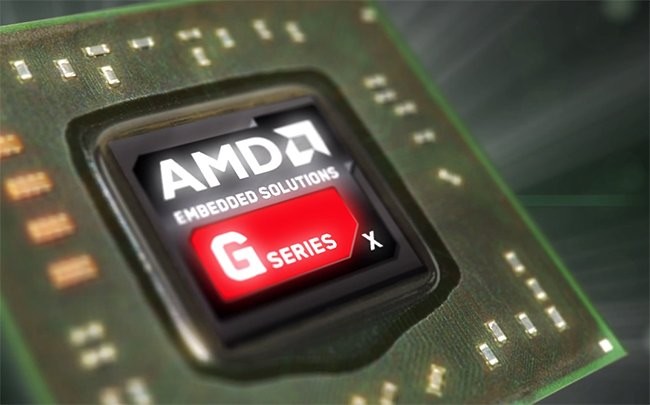
Benchmark coverage: 19%
E-350
1021
Cinebench 11.5 64-bit multi-core
Cinebench Release 11.5 Multi Core is a variant of Cinebench R11.5 which uses all the processor threads. A maximum of 64 threads is supported in this version.
Benchmark coverage: 17%
E-350
1
Mining hashrates
Cryptocurrency mining performance of E-350. Usually measured in megahashes per second.
| Bitcoin / BTC (SHA256) | 6.8 Mh/s |
Best GPUs for E-350
People consider these graphics cards to be good for E-350, according to our PC configuration statistics.
Radeon HD
6310
57.5%
Radeon HD
6470M
6%
Radeon HD
7400G
2. 6%
6%
Radeon HD
6320
2.4%
Radeon HD
6370M
1.2%
GeForce GTX
1050 Ti
1.2%
Radeon RX
Vega 7
1.2%
Radeon
Graphics
1%
Radeon RX
580
0.9%
UHD
Graphics 630
0.8%
These are the fastest graphics cards for E-350 in our user configuration statistics.
There is a total of 968 configurations based on E-350 in our database.
GeForce RTX
4090
0.4% (4/968)
GeForce RTX
3090 Ti
0.2% (2/968)
Radeon RX
7900 XT
0.1% (1/968)
GeForce RTX
3080 Ti
0.3% (3/968)
GeForce RTX
3090
0.3% (3/968)
Radeon RX
6900 XT
0.2% (2/968)
GeForce RTX
3080
0.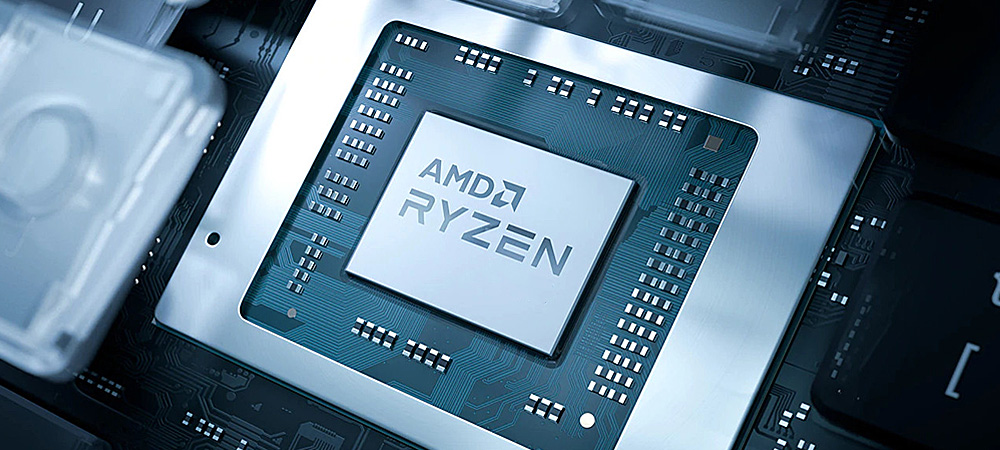 1% (1/968)
1% (1/968)
GeForce RTX
2080 Ti
0.1% (1/968)
GeForce RTX
3060 Ti
0.1% (1/968)
GeForce RTX
2080 Super
0.1% (1/968)
User rating
Here is the rating given to the reviewed processor by our users. Let others know your opinion by rating it yourself.
Questions and comments
Here you can ask a question about E-350, agree or disagree with our judgements, or report an error or mismatch.
Please enable JavaScript to view the comments powered by Disqus.
processor specifications and tests in 10 benchmarks
AMD started selling the E-450 on August 22, 2011. This is a processor for laptops, it has 2 cores and 2 threads, the processor is made according to the 40 nm process technology.
This is a processor for laptops, it has 2 cores and 2 threads, the processor is made according to the 40 nm process technology.
Processor made for socket FT1, TDP 18W. DDR3 memory is supported.
Specifications
General information
- Release date
- August 22, 2011
- Market price
- $125
- Purpose
- for laptops
- Architecture
- Zacate
- Series
- AMD E-Series
- Process
- 40 nm
- Crystal size
- 75 mm²
- Processor capacity
- 64 bit
Frequencies and performance
- Clock speed
- 1650 MHz
- Maximum frequency
- 1650 MHz
- Number of cores
- 2
- Number of threads
- 2
- Level 1 cache
- 64 KB
- Level 2 cache
- 512 KB
- Unlocked multiplier
- +
Memory
- Memory type
- DDR3
Integrated Graphics
- Integrated Graphics
- AMD Radeon HD 6320
Compatibility
- Socket
- FT1
- Heat dissipation
- 18W
- Maximum number of processors in configuration
- 1
- Windows 11 support
- No
Technology and instructions
- Virtualization technologies
- AMD-V
- Instruction sets
- MMX(+), SSE, SSE2, SSE3, SSE3S, SSE4A
Benchmarks
Interesting information:
Microphone test
Comparison with other processors
Processor 1:
Processor 2:
Video reviews and tests
Testing HP 635 laptop on AMD E-450 + Radeon HD 6320
Testing HP 635 laptop on AMD E-450 + Radeon HD 6320
Asus X53U laptop — is the E- processor capable of life 450?! Win 10!? SSD?!
E 450 Radeon 6320 Game Test
Testing games on AMD E450 with Radeon 6320 GPU — severe overheating!
PC Game List || AMD E-450 APU 1.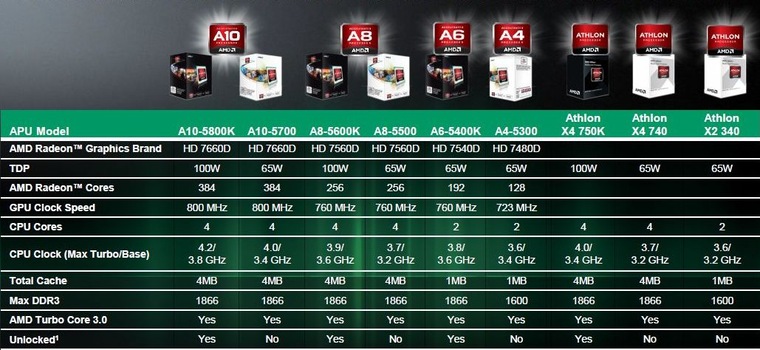 6 GHz
6 GHz
?(LIVE) Rejogando — Nordlys [Battlefield V]?Aovivo
Samsung E450 laptop upgrade, CPU replacement, memory upgrade
AMD E-450 — Gaming on an old DUAL-Core APU! [HD 6320]
#2 PC Game List || AMD E-450 APU 1.6 GHz
Cambiar AMD E-450 a Intel i7 2820QM solo en dell inspiron M4050 // Upgrade from AMD to Intel laptop
AMD E-450 + Radeon HD 6320 = LEAGUE OF LEGENDS
GTA V — HP 635 — AMD E-450 with Radeon HD6320
If you find an error or have something to add, write in the comments. Have you had any experience with this processor? Is it worth buying one today?
Share with friends
we examine the performance of the CPU part of the Brazos
platform Despite the fact that the first two-chip platforms («processor + chipset») appeared on the market through the efforts of SiS more than 10 years ago, until recently this option was not very popular. Occasionally met, of course (again, among SiS solutions and some NVIDIA chipsets), but just occasionally. And even transferring the memory controller directly to the processor (which AMD did back in 2003) did not immediately reverse the trend — manufacturers still preferred a more flexible and cheaper three-chip composition. However, after the memory controller moved to Intel processors, this company quickly set about correcting the situation. The first-born was the LGA1156 platform, in which, in fact, only the former south bridge remained from the chipset (the PCIe controller went to the processor, and a little later, the GPU), and a few months later, the “atomic” Pine platform was “ennobled” in a similar way. Trail — in general, now for Intel products this is more a rule than an exception.
And even transferring the memory controller directly to the processor (which AMD did back in 2003) did not immediately reverse the trend — manufacturers still preferred a more flexible and cheaper three-chip composition. However, after the memory controller moved to Intel processors, this company quickly set about correcting the situation. The first-born was the LGA1156 platform, in which, in fact, only the former south bridge remained from the chipset (the PCIe controller went to the processor, and a little later, the GPU), and a few months later, the “atomic” Pine platform was “ennobled” in a similar way. Trail — in general, now for Intel products this is more a rule than an exception.
AMD, however, continued to use a three-chip combination, since, as we have already said, this is a more flexible option: you can assemble any configuration you like: from a multi-core processor with integrated video and a simple south bridge to an average CPU, but with excellent support for Multi-GPU and rich expansion options.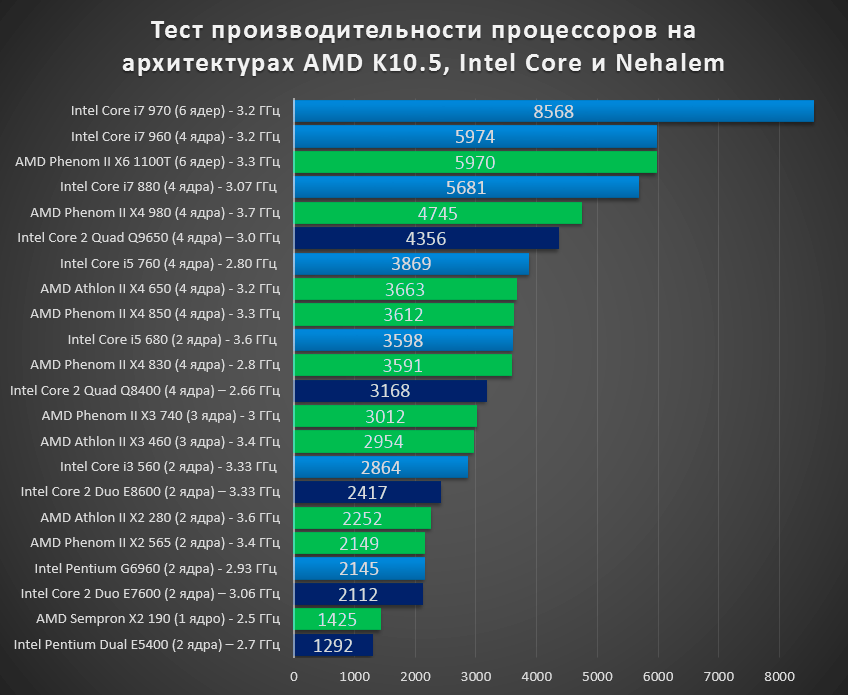 For the desktop market, this is a good practice — there is more than enough space on typical desktop boards 🙂 But in the mobile segment, it was logical to reduce the number of chips, which is being done now. The first to enter the market was the Brazos platform, which we have already written about briefly. In principle, there is nothing fundamentally new in it: as in the case of Intel solutions, the rejection of the north bridge is achieved by transferring both the PCIe controller and the GPU from it directly to the processor. Note that work on combining the CPU and GPU at AMD began earlier than at Intel, but the products entered the market later.
For the desktop market, this is a good practice — there is more than enough space on typical desktop boards 🙂 But in the mobile segment, it was logical to reduce the number of chips, which is being done now. The first to enter the market was the Brazos platform, which we have already written about briefly. In principle, there is nothing fundamentally new in it: as in the case of Intel solutions, the rejection of the north bridge is achieved by transferring both the PCIe controller and the GPU from it directly to the processor. Note that work on combining the CPU and GPU at AMD began earlier than at Intel, but the products entered the market later.
So there is nothing surprising in the fact that the company is positioning it not just as an association, but as a fundamentally new class of devices — APU (Accelerated Processing Unit). Say, now the processor and video cores are not only side by side, but also represent a heterogeneous multi-core processor architecture, «helping» each other in solving various problems, including those not exclusively related to graphics.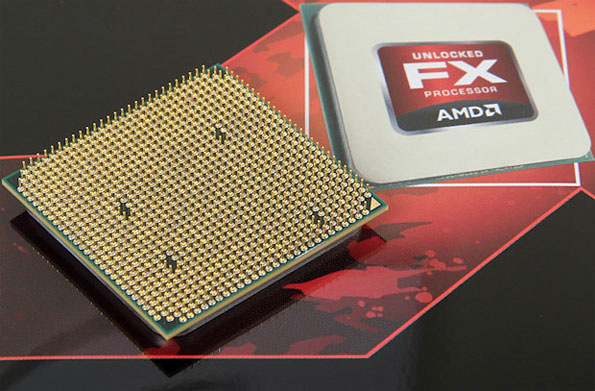 Yes, the same GPGPU that has been talked about a lot lately, although it has less practical impact in mass tasks than if all this shaking of the air was directed to generating electricity using a wind generator 🙂 Especially since AMD does not have much time left: the built-in GMA HD video accelerator (does not meet the definition of APU, since the GPU and CPU in the «old» Intel processors were on separate chips) was also able to decode high-resolution video (which is really necessary in practice for many), and the GMA HD 2000/3000 of the LGA1155 platform was taught already «help» the processor in transcoding this very video.
Yes, the same GPGPU that has been talked about a lot lately, although it has less practical impact in mass tasks than if all this shaking of the air was directed to generating electricity using a wind generator 🙂 Especially since AMD does not have much time left: the built-in GMA HD video accelerator (does not meet the definition of APU, since the GPU and CPU in the «old» Intel processors were on separate chips) was also able to decode high-resolution video (which is really necessary in practice for many), and the GMA HD 2000/3000 of the LGA1155 platform was taught already «help» the processor in transcoding this very video.
In general, everything is as usual — manufacturers go the same way, sometimes inventing some beautiful names on it, which in fact do not mean anything special. But there is nothing wrong with that either. The main thing is how the resulting product works, and not how it is achieved. Be that as it may, but in terms of graphics, the AMD solution is more functional (in particular, DirectX 11 is supported), theoretically more productive (80 stream processors), and in general — the main competitor (namely Intel Atom) has not yet acquired even something of the GMA HD level, not to mention the latest GMA HD 2000/3000.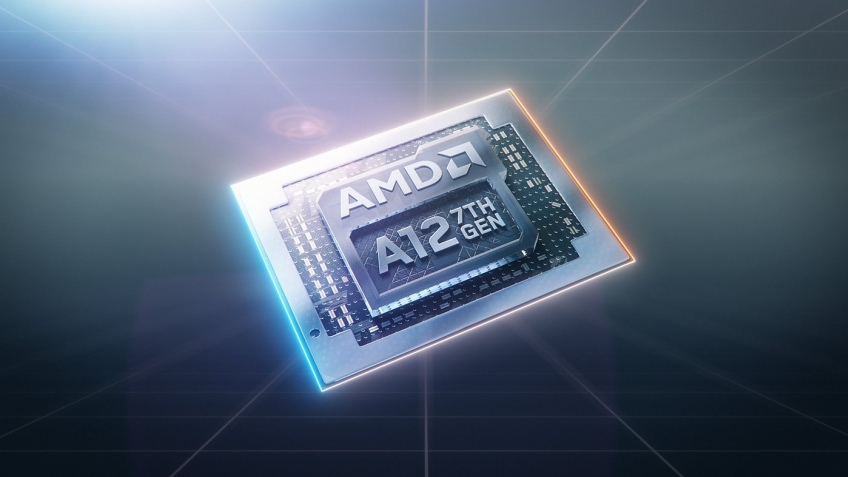 And in terms of the processor part, AMD’s solution is somewhat more interesting than Atom, if only because, like other modern processors, it supports command reordering. At the same time, thanks to a thinner process technology, Zacate and Ontario are even smaller than Atom and comparable to it in terms of power consumption.
And in terms of the processor part, AMD’s solution is somewhat more interesting than Atom, if only because, like other modern processors, it supports command reordering. At the same time, thanks to a thinner process technology, Zacate and Ontario are even smaller than Atom and comparable to it in terms of power consumption.
This is the end of the theory for now — we already had a couple of articles on this topic («AMD Processor Trio» and «AMD Zacate — a preview of the first APU»), and we do not plan to stop there 🙂 Since now we managed to get real product based on the new processor, let’s start to get acquainted with the practical performance. We will not limit ourselves to one article on this topic either, and today we bring to your attention the first of them, in which the performance of Zacate (specifically, AMD E-350, the highest model in the line) will be compared with the performance of the older Atom and a pair of dual-core Celerons — one of the first and the best so far.
5
5
5 90EAL /2
2/4
2/2
2/2
9022/24
Actually, everything has been said about the participants above: E-350 as today’s main hero, Atom D525 as its direct competitor, Celeron E1400, which (despite its venerable age) last time the newest Atom was not able to approach, and Celeron E3500 as a fast representative of modern budget desktop processors. Actually, according to preliminary estimates, it is he who should become the winner of today’s competition, but we are more interested in the question of how much the modern desktop low-end is faster than Atom and Zacate in specific terms.
Testing on a single platform, of course, is impossible, especially since low-power processors are usually simply soldered to the boards, but we tried to minimize the number of boards used. Both Celerons, in particular, had to be content with a model based on a formally modern, but functionally outdated (but cheap) G41 chipset. However, the «specialized» testing technique is such that it does not affect the graphics — we are interested in the processor part itself (the video is a separate story that requires a detailed presentation, but a little later). We again took a mobile Winchester — Seagate Momentus 5400.5 ST9320320AS (2.5″, 5400rpm, 320GB capacity, 8MB cache, SATA300 interface) to eliminate the potential impact of this factor. The memory in all systems was different simply because it is simply impossible to install the same one 🙂 But 4 GB were used everywhere — although this amount seems too big for netbooks and nettops, memory is now inexpensive, and the use of a smaller RAM capacity, to put it mildly, not very compatible with current testing methodology.
Test
The performance testing methodology (list of software used and testing conditions) is described in detail in a separate article. For ease of perception, the results on the diagrams are presented in percentages (the result of AMD Athlon II X4 620 is taken as 100% in each of the tests). Detailed results in absolute terms are available as a spreadsheet in Microsoft Excel format.
Like last time, we have completely removed four groups of tests. However, all the scores on the charts, except for the final one, are compatible with «full-format» tests, which allows you to quickly compare the presented processors with any of our tested ones. In order to make this possible, we removed the entire groups, instead of finer work with specific applications. The latter could give a more useful result in a narrow sense (since some of the discarded applications will probably run on Atom or, even more so, Zacate, and no one will run on such systems), but would not allow for compatibility results in a broad sense.
Graphic editors
Two out of four E-350 cores are enough for three out of four applications, and Photoshop preferred two threads to be more efficient than four, so the AMD processor easily outperformed the Atom D525 by 20%. A good result from the point of view of those who buy a netbook on it, but mediocre for nettops: the lag behind the budget desktop processor three years ago is one and a half times! In Atom, of course, it is generally double, but in the end the difference can be considered insignificant in practice — the nettop has not come close to the old (!) budget (!) desktop. Well, there is nothing special to compare with the new one — the Celeron E3500 is one of the slowest desktop processors, however, in comparison with both «lightweights» it is not just fast, but fundamentally faster 🙂
Archivers
Backed by HT, Atom wins a little in 7-Zip, but loses in the other two tests (despite having a larger shared L2 cache), so it lags a bit in the overall standings.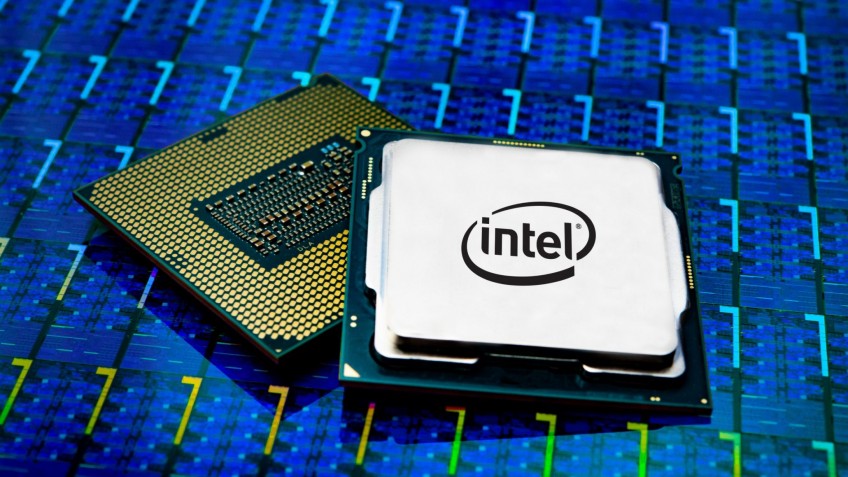 Comparisons even with budget desktop processors still fail: one and a half times behind the three-year-old processor and two times behind the modern one speaks for itself. However, you can look at the situation from the other side: as you can see, in the budget segment, productivity is not growing quickly. Even slower than mass or top processors. Thus, if both companies make sufficient efforts to modernize energy-efficient solutions, the “time gap” between them and “full-fledged” budget products can be reduced to at least two to three years.
Comparisons even with budget desktop processors still fail: one and a half times behind the three-year-old processor and two times behind the modern one speaks for itself. However, you can look at the situation from the other side: as you can see, in the budget segment, productivity is not growing quickly. Even slower than mass or top processors. Thus, if both companies make sufficient efforts to modernize energy-efficient solutions, the “time gap” between them and “full-fledged” budget products can be reduced to at least two to three years.
Compilation
But in this very cache-loving (however, it would be more correct to say «all-loving» :)) test, Celeron E1400 are in an initially uncomfortable position — only 512K L2 for both cores make themselves felt. The rest of its processors have a megabyte each (although the E-350 is divided into two halves, but even that is bread), Atom does four computation threads at the same time … In general, although our main characters again fell behind the Celeron E3500 twice, but got very close to the E1400. And their results are about the same. Atom, however, won three seconds, but this did not affect the scores (against the background of half an hour of the total test execution time).
And their results are about the same. Atom, however, won three seconds, but this did not affect the scores (against the background of half an hour of the total test execution time).
Java
Intel played a cruel joke on Atom by depriving it of command reordering. As a result, even the «extra» computation threads did not allow him to capitulate with honor — AMD E-350 is 25% faster. Although both look rather pale against the background of Celeron, the gap is significant for processors of the same class: the E-350 is separated from the E1400 by almost the same 25%.
Internet browsers
The massacre of babies continues and even gets worse — a one and a half times superiority! A noticeable fly in the ointment, of course, is the fact that the backlog from both Celerons in this test also increased, however … Everyone knows that budget desktop processors “are sufficient for the Internet”, but the fact that nettops and netbooks on Zacate are far are more consistent with the root «net» — the result is important and indicative for those who are planning such a purchase.
Audio encoding
Atom’s ability to run four computation threads at once again had an effect, although it didn’t help it that much — two E-350 threads turned out to be more efficient 🙂 But still, here we fix the loss of the AMD platform. Although, given the way this test is organized, there is nothing unexpected in this. The size of the backlog from each of the Celerons is still the same.
Video encoding
A somewhat atypical task for both processors (taking into account their positioning), but nonetheless reveals well their computational capabilities. As you can see, they are approximately equal with a slight advantage of the AMD solution.
Total
Those who expected a miracle from the Brazos platform may be disappointed, because the miracle did not happen — the new AMD solution is certainly somewhat faster than Pine Trail, but it belongs to the same class, if we talk about the performance of the processor part itself. Neither one nor the other can still compete with desktop processors (albeit budget three-year-old ones).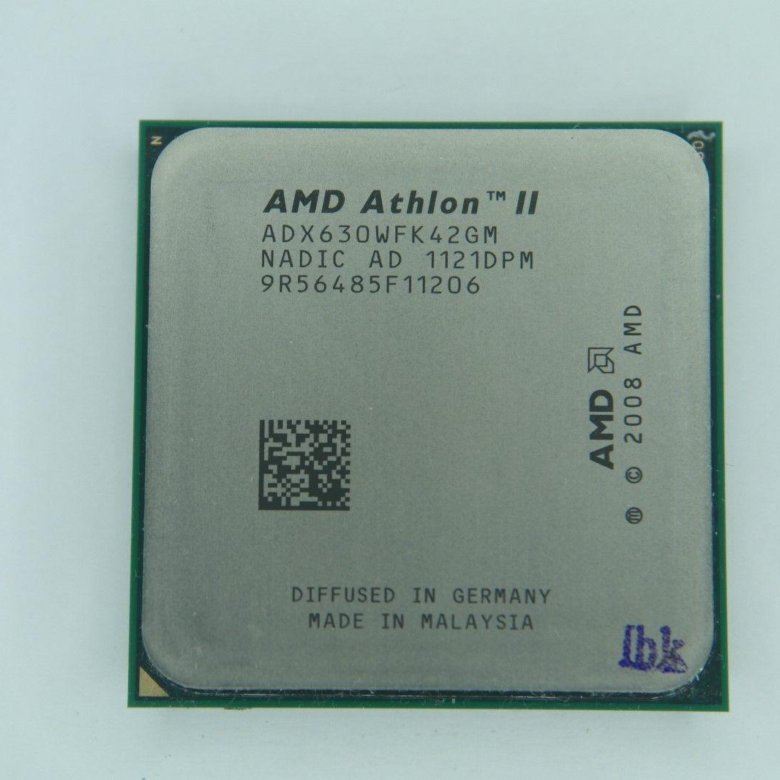 Yes, and it would be difficult to expect the opposite — after all, the performance of the K8 / K10 has long been known to everyone, and you can’t jump above your head. At one time (five years ago) Athlon 64 X2 3600+ (the youngest in the line) looked good against the background of Pentium D, but was immediately «blown away» after the appearance of Conroe. And how the attempt to compare the Athlon X2 BE-2350 with the «old» Pentium E2000 (which were, of course, a little better than the Celeron E1000, but worse than the new Celeron E3000) ended can also be seen in the article at the link. But both mentioned AMD processors still worked at a frequency of about 2 GHz, and not 1.6 GHz, like the E-350. Yes, of course, during the transition from K8 to K10, the company carried out a lot of optimizing measures, but none of them give any stunning effect that can compensate for the decrease in clock frequency (as well as the reduction in the L1 cache).
Yes, and it would be difficult to expect the opposite — after all, the performance of the K8 / K10 has long been known to everyone, and you can’t jump above your head. At one time (five years ago) Athlon 64 X2 3600+ (the youngest in the line) looked good against the background of Pentium D, but was immediately «blown away» after the appearance of Conroe. And how the attempt to compare the Athlon X2 BE-2350 with the «old» Pentium E2000 (which were, of course, a little better than the Celeron E1000, but worse than the new Celeron E3000) ended can also be seen in the article at the link. But both mentioned AMD processors still worked at a frequency of about 2 GHz, and not 1.6 GHz, like the E-350. Yes, of course, during the transition from K8 to K10, the company carried out a lot of optimizing measures, but none of them give any stunning effect that can compensate for the decrease in clock frequency (as well as the reduction in the L1 cache).
However, one can look at the current situation from a completely different point of view. Yes, of course, in terms of performance, Brazos even in the older modification (that is, with processors from the Zacate family, and not Ontario) takes us back five or six years. But then the same level was achieved using a multi-chip layout, the central element of which was a processor with a TDP of several tens of watts. Plus the north bridge of the chipset, which was far from being fed by the holy spirit. Plus, a separate video chip — and in terms of performance and, especially, functionality, the current Radeon HD 6310 is a cut above not only the integrated solutions of that time, but also discrete video cards of the middle (or even top) level: saving several tens of watts. And in terms of money, all this in total amounted to several hundred dollars. Now, the same capabilities have been squeezed into one small chip, and the same amount will have to be paid for a ready-made mobile computer, with all the additional strapping (including a display, drives, etc.). So it’s not all bad. Although, of course, you always want the performance to be higher 🙂
Yes, of course, in terms of performance, Brazos even in the older modification (that is, with processors from the Zacate family, and not Ontario) takes us back five or six years. But then the same level was achieved using a multi-chip layout, the central element of which was a processor with a TDP of several tens of watts. Plus the north bridge of the chipset, which was far from being fed by the holy spirit. Plus, a separate video chip — and in terms of performance and, especially, functionality, the current Radeon HD 6310 is a cut above not only the integrated solutions of that time, but also discrete video cards of the middle (or even top) level: saving several tens of watts. And in terms of money, all this in total amounted to several hundred dollars. Now, the same capabilities have been squeezed into one small chip, and the same amount will have to be paid for a ready-made mobile computer, with all the additional strapping (including a display, drives, etc.). So it’s not all bad. Although, of course, you always want the performance to be higher 🙂
As for the comparison of direct competitors of the form “senior Zacate vs.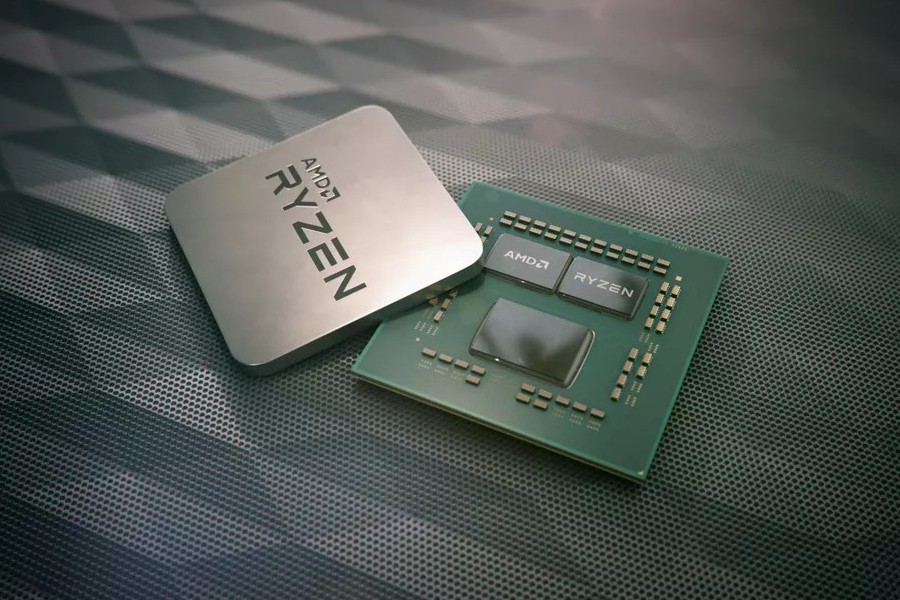 senior Atom”, as we can see, in terms of the processor part, they are approximately equivalent: in the overall standings, the E-350 is faster than the D525 by about 10%. But both processors have their strengths and weaknesses. Atom does not win much in terms of power consumption and output (TDP 13 W vs. 18 W) and feels good in a multi-threaded environment. Zacate, on the other hand, has better per-thread performance, which sometimes has a dramatic effect: just look at the tests of browsers and Java machines — and these are the tasks that often have to be solved no beeches and no tops!
senior Atom”, as we can see, in terms of the processor part, they are approximately equivalent: in the overall standings, the E-350 is faster than the D525 by about 10%. But both processors have their strengths and weaknesses. Atom does not win much in terms of power consumption and output (TDP 13 W vs. 18 W) and feels good in a multi-threaded environment. Zacate, on the other hand, has better per-thread performance, which sometimes has a dramatic effect: just look at the tests of browsers and Java machines — and these are the tasks that often have to be solved no beeches and no tops!
Well, the strong point of the new APU is that it is really an APU — the presence of as many as 80 stream processing units operating at a frequency of 500 MHz. And this is not so little — shader processors are equivalent to those used in the Radeon HD 5000/6000 series. As for quantity, not quality, in fact, in the new processors, the company has built its own . .. junior discrete solution (and desktop, not mobile — they are even weaker) — HD5450 (there are the same two SIMD blocks of 40 processors each, only those operating at 650 MHz). Of course, there is no question of complete equality of solutions, since the 5450 has its own memory, for access to which you do not need to fight with processor cores, but otherwise they are quite comparable. And head and shoulders above AMD’s most powerful legacy integrated solution, the Radeon HD 4290 (top chipset 890GX), where there are only 40 processors (albeit operating at a frequency of 700 MHz), and the functionality of which is only at the level of the previous generation of AMD GPUs.
.. junior discrete solution (and desktop, not mobile — they are even weaker) — HD5450 (there are the same two SIMD blocks of 40 processors each, only those operating at 650 MHz). Of course, there is no question of complete equality of solutions, since the 5450 has its own memory, for access to which you do not need to fight with processor cores, but otherwise they are quite comparable. And head and shoulders above AMD’s most powerful legacy integrated solution, the Radeon HD 4290 (top chipset 890GX), where there are only 40 processors (albeit operating at a frequency of 700 MHz), and the functionality of which is only at the level of the previous generation of AMD GPUs.
Thus, Brazos has an ace up its sleeve when playing with Pine Trail: in applications where it is possible to shift at least part of the work to stream processors, performance will vary significantly. Of course, the ability to play this «ace» is highly dependent on software manufacturers, but in some relatively massive tasks, such as watching videos in HD formats (including a flash player), the effect is already there.
